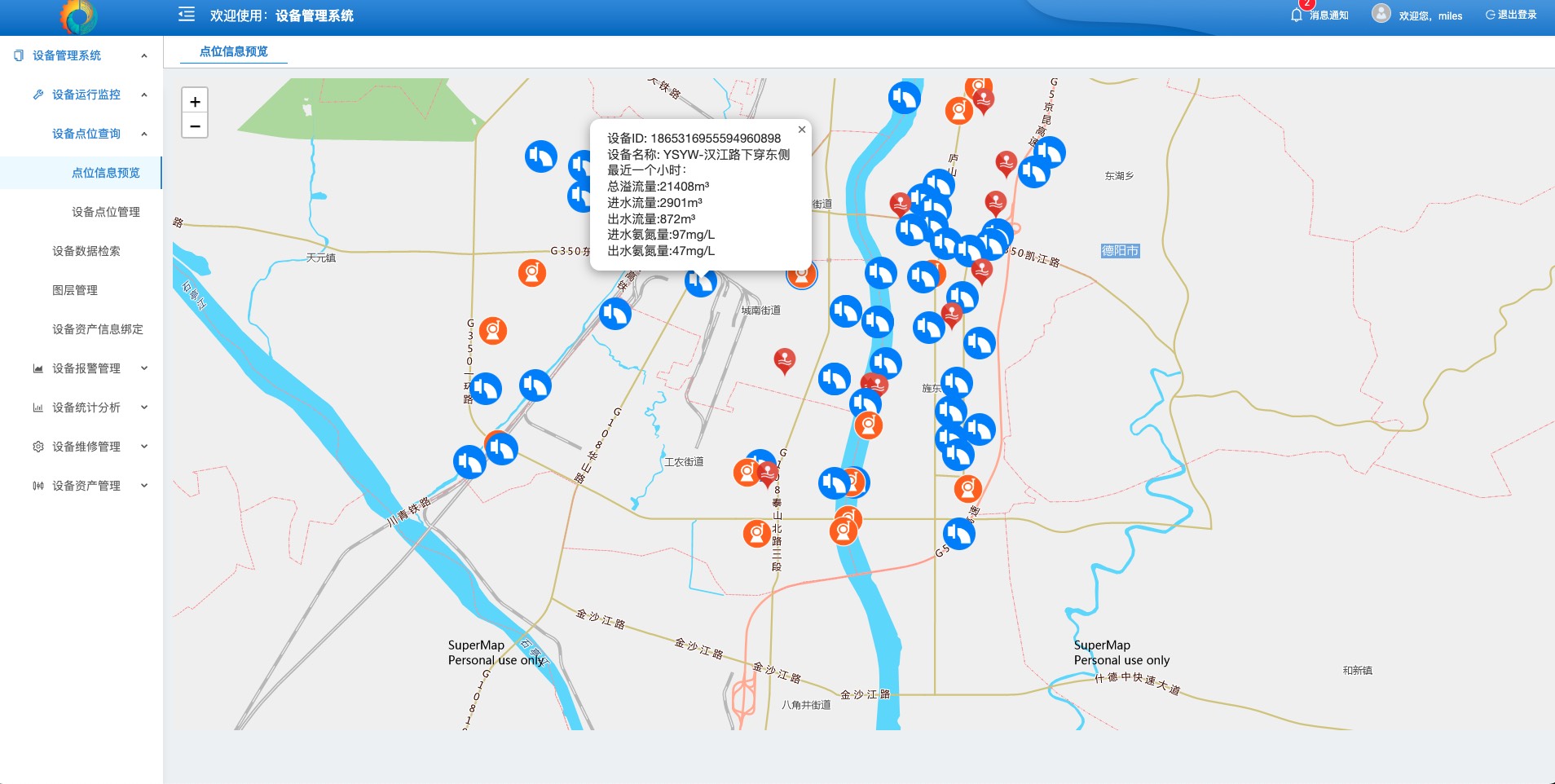Project Background
The Smart Water Management System project is CD Turing's first government-enterprise platform project since its establishment. The project aims to address critical challenges such as flood disaster early warning, work order dispatch, and resource management through the integration of advanced technologies like the Internet of Things (IoT), big data analytics, artificial intelligence (AI), deep learning, and GIS mapping. The platform provides a comprehensive solution for real-time water resource monitoring, flood prediction, intelligent scheduling, and emergency response, helping government agencies and related departments respond more efficiently to disasters.
Project Objective
The main objectives of this project are to build an intelligent water management platform that addresses the following key issues:
Flood Early Warning: Using real-time monitoring data and AI algorithms, the system provides early warnings for potential flood risks, enabling quick decision-making by relevant authorities.
Work Order Dispatch and Allocation: The system uses intelligent scheduling algorithms and models to automatically generate and allocate work orders, ensuring efficient emergency response.
Resource and Personnel Management: By integrating GIS mapping and deep learning algorithms, the system dynamically schedules and optimizes the allocation of resources such as personnel and materials, ensuring efficient resource use during emergency response.
Team Role and Contributions
In the development of the Smart Water Management System, CD Turing’s team was responsible for the following key tasks:
Flood Early Warning System Development & AI Algorithm Optimization: The team collected multi-dimensional data such as water quality, rainfall, and river water levels, and built an AI-based flood prediction model. This model accurately forecasts potential flood risks and provides early warnings to assist with timely decision-making.
Deep Learning and Model Training: To enhance the accuracy of flood predictions, deep learning algorithms were employed to train the system on large datasets, extracting patterns and trends for more precise forecasting. The model continues to adapt and improve based on new environmental data.
Work Order Dispatch and Automatic Allocation: Using intelligent scheduling algorithms, the system automatically generates work orders and optimizes task distribution based on real-time data, such as disaster area locations, personnel positions, and material availability. The machine learning model continuously adjusts and refines scheduling strategies for more efficient work order management.
GIS Mapping and Resource Scheduling: GIS technology was integrated into the platform to provide real-time mapping of disaster areas and resource distribution. Deep learning algorithms optimized resource scheduling by dynamically adjusting the allocation of personnel and materials based on real-time disaster data, ensuring timely deployment of resources.
Data Analysis and Decision Support: The platform’s AI-driven data analytics provide decision support by generating real-time reports and predictive insights, enabling government agencies and stakeholders to make informed decisions based on comprehensive data. A visual dashboard was developed to provide an intuitive interface for decision-makers to monitor water resource status, work order progress, and emergency response activities.
Project Outcomes
Accurate Flood Early Warning: The integration of AI algorithms and deep learning models enables the system to predict flood risks ahead of time and issue early warnings, significantly enhancing the effectiveness and timeliness of emergency response.
Efficient Work Order Dispatch and Allocation: The intelligent scheduling system ensures work orders are automatically generated and tasks are assigned based on real-time data, reducing manual errors and delays in the execution of emergency response actions.
Intelligent Resource and Personnel Management: By combining GIS mapping with deep learning, the platform optimizes resource allocation for personnel and materials, ensuring efficient use of resources during flood response and relief operations.
Enhanced Emergency Response and Decision Support: The decision support system leverages data analysis and AI technologies to help government agencies quickly make informed decisions, significantly improving flood disaster management.
Self-learning and Optimization: The platform continually improves through deep learning and model training, allowing the system to adapt to changing conditions and enhance the accuracy and efficiency of flood prediction, scheduling, and resource management.
Project Summary
The Smart Water Management System's flood early warning and work order dispatch features, integrating AI, deep learning, big data analytics, and GIS technology, effectively addressed critical challenges in flood disaster prediction, resource scheduling, and emergency response. This project provided a comprehensive, efficient, and scalable disaster management solution for government agencies, significantly improving the accuracy and timeliness of emergency response efforts. The successful implementation of this project has also helped CD Turing accumulate valuable experience in the government-enterprise platform sector, especially in applying AI and machine learning technologies. Moving forward, CD Turing will continue to advance intelligent technology-driven solutions, supporting digital transformation and enhancing disaster management capabilities for government and enterprise clients.






